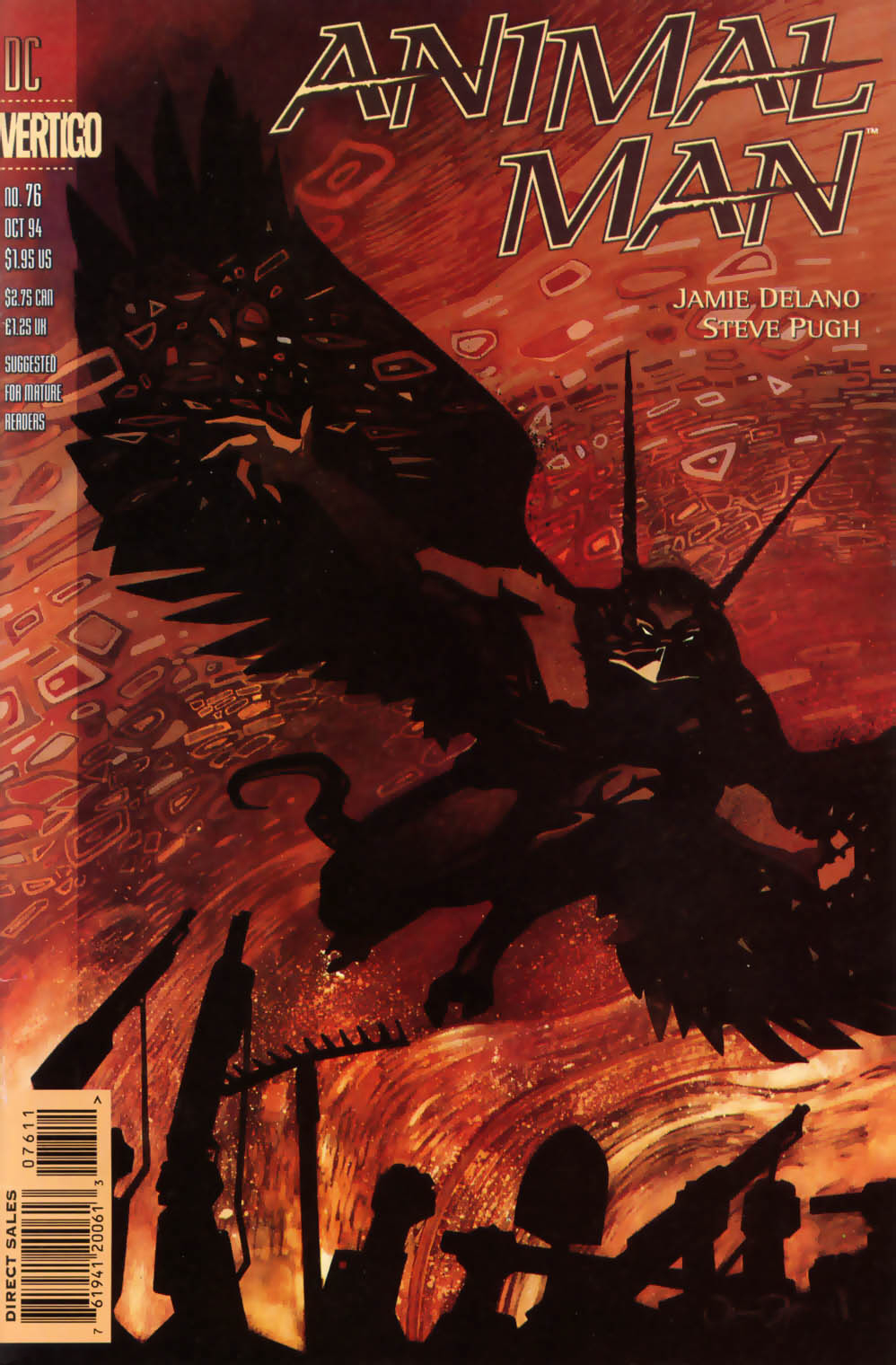Sun Nov 6, 2016
The first Vertigo post for this blog is also the first Animal Man post.
Ahh, Animal Man. Such a great character raised out of mediocre beginnings. Without getting too mired in details, it’s enough to say that Buddy Baker–Animal Man–can tap into the abilities of animals and make use thereof to fight injustice.
Also, unlike most superheroes, he has a family (a wife, Ellen, and two children, Cliff and Maxine). This is important, because the central conflict in Buddy’s life is the tug-of-war that constantly occurs between his desire to live a normal life with his family and his desire to use his powers in the best and most effective way possible (often to try and raise awareness about animal rights and ecological issues). This tug-of-war has led Buddy to some interesting places (for the reader, at least; it’s pretty much ruined his life over and over again). At least, this is what happened to the character in the first volume of his own series; Grant Morrison set up this model and pretty much every author working on Animal Man since has followed suit, although they may have tweaked some specifics here and there, like looking at how Ellen deals with her completely absurd life.
At one point, Buddy went through a significant metamorphosis that left him in the body of a chimerical creature with the attributes of all kinds of animals, and he decided to use his new appearance to help found a church that would worship his daughter Maxine and her even-more-powerful animal-related powers–the church is even called “The Life-Power Church of Maxine”–set up half-seriously and half-deceptively by the Bakers and their closest friends.
The cover to issue 076, then, shows Buddy in his animal-avatar form flying through a red sky over what appears to be the upraised arms/hands of an angry mob, given the tools and guns held aloft by those arms.

Animal Man issue 076
The story begins with several pages narrated via in-universe comics drawn by budding cartoonist Cliff Baker, who lets us know that the Life-Power Church is on its way to Montana in search of some promised land where people and animals can live in harmony. They’ve had to deal with some hunters and other critics along the way, though.
The cartoon has been mailed to Ellen, who’s not with her family but instead with a small group of lesbian activists (that’s not a snarky, bigoted comment by me–that’s how the characters were introduced and how they continue to be portrayed; a few issues before this one, Ellen notes to Buddy that she’s felt a connection growing between her and Sarah, one of the activists).
Apparently the Life-Power Church is facing off against the National Guard in Nebraska (there’s references to a “plague” that has affected a number of people across the country, where they dream of themselves as animals running wild on human society), and Ellen’s conflicted between staying put with Sarah and being there in Nebraska for her family; the conversation in this scene does a pretty solid job of demonstrating various characters’ takes on the situation so that no one seems to have the “best” or “most correct” answer.
There’s an equally intriguing scene between Maxine and a follower of the LFC (Ray, given the Church name “Manta Ray”) who’s secretly a government agent awaiting the order to assassinate Maxine, Buddy, or both. But she finds herself questioning her ability to murder a child if so commanded when she takes an impromptu romp/bath in a nearby river with Maxine and a throng of animal companions/guards.
Ray’s plot intertwines with that of an older man named Jack who’s looking to save his son from the LFC cult. Ray ends up getting caught by some locals who decide to rape her in the corn fields. Jack saves her, figuring that she can’t have made any poor decisions (that is, it’s not her fault she was caught and is being tortured, it’s the Church’s) that his own son didn’t make.
Surprisingly(?), there’s very little Buddy himself in this issue … but I don’t find myself disappointed by that fact. The overall story is really well fleshed out by the focus on these peripheral characters impacted by his actions from earlier issues. It really makes the world come alive in a way that you don’t get with close examinations of only a comic’s core characters. For example: we don’t ever really have that many opportunities for the development of peripheral characters in Batman whose lives were affected by the actions of Batman or his rogues’ gallery.